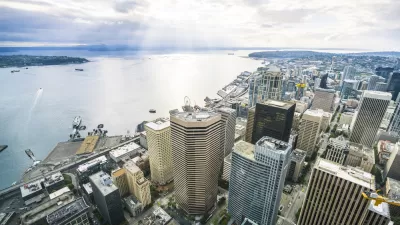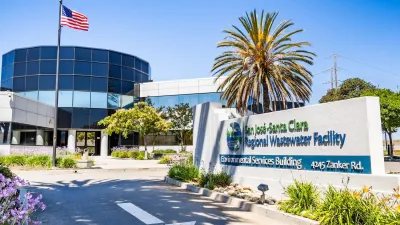The dichotomy in economic outcomes around the country won't be solved by one-off competitions like the bidding process to land Amazon's second headquarters.

After the process to site Amazon's second headquarters entered a dramatic new stage this week, the nation is left again to evaluate what the spectacle reveals of economic development strategy in the United States. According to Mark Muro and Amy Liu, "while the fall’s 'Amazon Idol' competition is garnering high ratings, the fact remains that it is a major distraction from the glaring need for the country to systematically think about a much larger development problem—the nation’s gaping regional prosperity divides."
Instead of "Amazon Idol," Muro and Liu propose a recommitment to regional growth. "At present, America possesses no strategy—let alone serious policies—for addressing the uneven allocation of growth across the nation’s 50 states and hundreds of metropolitan areas," according to Muro and Liu, who detail the landscape of economic development around the United States under the current political regime.
Muro and Liu identify a few useful existing precedents, both in theory and in practice, to "hack together some basic outlines of what policymakers, especially the federal government, might do to push back against the nation’s geographical distress."
Here's are two "watchwords" that organize their recommendations, with more details included in the source article: 1) "Make spatially balanced growth a priority" and 2) "Maintain (don’t cut) existing policies that enhance U.S. competitiveness—and support regional development."
[Editor's note: This article is from September 2017, but we share it this week due to its relevance to current events.]

Maui's Vacation Rental Debate Turns Ugly
Verbal attacks, misinformation campaigns and fistfights plague a high-stakes debate to convert thousands of vacation rentals into long-term housing.

Planetizen Federal Action Tracker
A weekly monitor of how Trump’s orders and actions are impacting planners and planning in America.

San Francisco Suspends Traffic Calming Amidst Record Deaths
Citing “a challenging fiscal landscape,” the city will cease the program on the heels of 42 traffic deaths, including 24 pedestrians.

Defunct Pittsburgh Power Plant to Become Residential Tower
A decommissioned steam heat plant will be redeveloped into almost 100 affordable housing units.

Trump Prompts Restructuring of Transportation Research Board in “Unprecedented Overreach”
The TRB has eliminated more than half of its committees including those focused on climate, equity, and cities.

Amtrak Rolls Out New Orleans to Alabama “Mardi Gras” Train
The new service will operate morning and evening departures between Mobile and New Orleans.
Urban Design for Planners 1: Software Tools
This six-course series explores essential urban design concepts using open source software and equips planners with the tools they need to participate fully in the urban design process.
Planning for Universal Design
Learn the tools for implementing Universal Design in planning regulations.
Heyer Gruel & Associates PA
JM Goldson LLC
Custer County Colorado
City of Camden Redevelopment Agency
City of Astoria
Transportation Research & Education Center (TREC) at Portland State University
Jefferson Parish Government
Camden Redevelopment Agency
City of Claremont





























